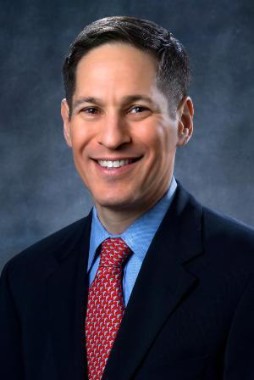User login
Binge drinking, which is the most dangerous form of alcohol consumption, is a serious, yet under-recognized health risk for women, according to a federal report that showed one in eight U.S. adult women and one in five high school girls binge drank in 2011.
The issue is not new, officials said, but they expressed concern with the statistics, saying that the rates of binge drinking among high school girls is now almost equal to that of boys, and the rates have remained almost the same among U.S. adult women for more than a decade.
In 2011, nearly 13% of U.S. adult women binge drank more than three times a month and with roughly six drinks during each occasion. Meanwhile, close to 20% of high school girls reported binge drinking, according to the analysis of two national databases, which was published in the Centers for Disease Control and Prevention’s Vital Signs (MMWR 2013 Jan. 3;62:1-5).
CDC director Thomas R. Frieden said that there were no data showing whether women are aware of the dangers of binge drinking, and he stressed the importance of raising awareness.
"Health-care providers have an important role to play in reducing binge drinking," Dr. Frieden said during a news conference. "They can talk to all patients, including pregnant women about their alcohol consumption, and advise those who drink too much, to do so less."
The report, which analyzed data from the 2011 Behavioral Risk Factor Surveillance System (278,000 women) and the national Youth Risk Behavior Survey (7,500 girls), also showed:
• During each year, between 2001 and 2005, alcohol use accounted for nearly 23,000 deaths and 633,000 years of potential life lost among U.S. girls and adult women. Binge drinking accounted for half of these statistics.
• Binge drinking was most prevalent among women aged 18- to 24-years-old (24%) and 25- to 34-years-old (20%), and then gradually decreased with increasing age.
• Binge drinking was most prevalent among women whose annual household income was $75,000 or more (16%).
• Although non-Hispanic white women had the highest rate of binge drinking (13%), compared with 11% among Hispanic women, and 10% among black women, the frequency and intensity of binge drinking was similar across the racial and ethnic groups.
• Women without a high school degree had the lowest prevalence of binge drinking (8.5%), yet the ones who binge drank reported the highest frequency (more than four times a month), and intensity (more than six drinks per occasion), compared with women who had higher levels of education.
• Roughly 38% of high school girls consumed alcohol, more than half of whom said that they binge drank.
• The prevalence of binge drinking among Hispanic (22.4%) and non-Hispanic white (21.7%) high school girls was nearly twice as much as that of non-Hispanic black girls (10.3%).
Binge drinking was defined as consumption of four or more drinks in a row for women, and five or more drinks in a row for high school girls. Officials said that the rates would have been higher by one-third or more if the number of drinks for girls was reduced from 5 to 4 in the survey.
Federal officials said that binge drinking is a risk factor for many health and social problems among women, because their bodies respond to alcohol differently from men. Women generally reach higher blood alcohol levels than do men at the same consumption level, even after adjustment for body size, food eaten, and other factors. Binge drinking has been associated with heart disease, breast cancer, behaviors that could lead to contracting sexually transmitted diseases, and unintended pregnancy, in addition to fetal alcohol spectrum disorders and sudden infant death syndrome.
Officials urged physicians, states, and communities to implement evidence-based interventions, such as recommendations by the Guide to Community Preventive Services, and the U.S. Preventive Services Task Force.
On Twitter @naseemsmiller
Binge drinking, which is the most dangerous form of alcohol consumption, is a serious, yet under-recognized health risk for women, according to a federal report that showed one in eight U.S. adult women and one in five high school girls binge drank in 2011.
The issue is not new, officials said, but they expressed concern with the statistics, saying that the rates of binge drinking among high school girls is now almost equal to that of boys, and the rates have remained almost the same among U.S. adult women for more than a decade.
In 2011, nearly 13% of U.S. adult women binge drank more than three times a month and with roughly six drinks during each occasion. Meanwhile, close to 20% of high school girls reported binge drinking, according to the analysis of two national databases, which was published in the Centers for Disease Control and Prevention’s Vital Signs (MMWR 2013 Jan. 3;62:1-5).
CDC director Thomas R. Frieden said that there were no data showing whether women are aware of the dangers of binge drinking, and he stressed the importance of raising awareness.
"Health-care providers have an important role to play in reducing binge drinking," Dr. Frieden said during a news conference. "They can talk to all patients, including pregnant women about their alcohol consumption, and advise those who drink too much, to do so less."
The report, which analyzed data from the 2011 Behavioral Risk Factor Surveillance System (278,000 women) and the national Youth Risk Behavior Survey (7,500 girls), also showed:
• During each year, between 2001 and 2005, alcohol use accounted for nearly 23,000 deaths and 633,000 years of potential life lost among U.S. girls and adult women. Binge drinking accounted for half of these statistics.
• Binge drinking was most prevalent among women aged 18- to 24-years-old (24%) and 25- to 34-years-old (20%), and then gradually decreased with increasing age.
• Binge drinking was most prevalent among women whose annual household income was $75,000 or more (16%).
• Although non-Hispanic white women had the highest rate of binge drinking (13%), compared with 11% among Hispanic women, and 10% among black women, the frequency and intensity of binge drinking was similar across the racial and ethnic groups.
• Women without a high school degree had the lowest prevalence of binge drinking (8.5%), yet the ones who binge drank reported the highest frequency (more than four times a month), and intensity (more than six drinks per occasion), compared with women who had higher levels of education.
• Roughly 38% of high school girls consumed alcohol, more than half of whom said that they binge drank.
• The prevalence of binge drinking among Hispanic (22.4%) and non-Hispanic white (21.7%) high school girls was nearly twice as much as that of non-Hispanic black girls (10.3%).
Binge drinking was defined as consumption of four or more drinks in a row for women, and five or more drinks in a row for high school girls. Officials said that the rates would have been higher by one-third or more if the number of drinks for girls was reduced from 5 to 4 in the survey.
Federal officials said that binge drinking is a risk factor for many health and social problems among women, because their bodies respond to alcohol differently from men. Women generally reach higher blood alcohol levels than do men at the same consumption level, even after adjustment for body size, food eaten, and other factors. Binge drinking has been associated with heart disease, breast cancer, behaviors that could lead to contracting sexually transmitted diseases, and unintended pregnancy, in addition to fetal alcohol spectrum disorders and sudden infant death syndrome.
Officials urged physicians, states, and communities to implement evidence-based interventions, such as recommendations by the Guide to Community Preventive Services, and the U.S. Preventive Services Task Force.
On Twitter @naseemsmiller
Binge drinking, which is the most dangerous form of alcohol consumption, is a serious, yet under-recognized health risk for women, according to a federal report that showed one in eight U.S. adult women and one in five high school girls binge drank in 2011.
The issue is not new, officials said, but they expressed concern with the statistics, saying that the rates of binge drinking among high school girls is now almost equal to that of boys, and the rates have remained almost the same among U.S. adult women for more than a decade.
In 2011, nearly 13% of U.S. adult women binge drank more than three times a month and with roughly six drinks during each occasion. Meanwhile, close to 20% of high school girls reported binge drinking, according to the analysis of two national databases, which was published in the Centers for Disease Control and Prevention’s Vital Signs (MMWR 2013 Jan. 3;62:1-5).
CDC director Thomas R. Frieden said that there were no data showing whether women are aware of the dangers of binge drinking, and he stressed the importance of raising awareness.
"Health-care providers have an important role to play in reducing binge drinking," Dr. Frieden said during a news conference. "They can talk to all patients, including pregnant women about their alcohol consumption, and advise those who drink too much, to do so less."
The report, which analyzed data from the 2011 Behavioral Risk Factor Surveillance System (278,000 women) and the national Youth Risk Behavior Survey (7,500 girls), also showed:
• During each year, between 2001 and 2005, alcohol use accounted for nearly 23,000 deaths and 633,000 years of potential life lost among U.S. girls and adult women. Binge drinking accounted for half of these statistics.
• Binge drinking was most prevalent among women aged 18- to 24-years-old (24%) and 25- to 34-years-old (20%), and then gradually decreased with increasing age.
• Binge drinking was most prevalent among women whose annual household income was $75,000 or more (16%).
• Although non-Hispanic white women had the highest rate of binge drinking (13%), compared with 11% among Hispanic women, and 10% among black women, the frequency and intensity of binge drinking was similar across the racial and ethnic groups.
• Women without a high school degree had the lowest prevalence of binge drinking (8.5%), yet the ones who binge drank reported the highest frequency (more than four times a month), and intensity (more than six drinks per occasion), compared with women who had higher levels of education.
• Roughly 38% of high school girls consumed alcohol, more than half of whom said that they binge drank.
• The prevalence of binge drinking among Hispanic (22.4%) and non-Hispanic white (21.7%) high school girls was nearly twice as much as that of non-Hispanic black girls (10.3%).
Binge drinking was defined as consumption of four or more drinks in a row for women, and five or more drinks in a row for high school girls. Officials said that the rates would have been higher by one-third or more if the number of drinks for girls was reduced from 5 to 4 in the survey.
Federal officials said that binge drinking is a risk factor for many health and social problems among women, because their bodies respond to alcohol differently from men. Women generally reach higher blood alcohol levels than do men at the same consumption level, even after adjustment for body size, food eaten, and other factors. Binge drinking has been associated with heart disease, breast cancer, behaviors that could lead to contracting sexually transmitted diseases, and unintended pregnancy, in addition to fetal alcohol spectrum disorders and sudden infant death syndrome.
Officials urged physicians, states, and communities to implement evidence-based interventions, such as recommendations by the Guide to Community Preventive Services, and the U.S. Preventive Services Task Force.
On Twitter @naseemsmiller
FROM MMWR
Major Finding: One in eight U.S. adult women and one in five high school girls binge drank in 2011.
Data Source: Analysis of data from the 2011 Behavioral Risk Factor Surveillance System (278,000 women) and the national Youth Risk Behavior Survey (7,500 high school girls).
Disclosures: The authors had no relevant disclosures.

